Waisman scientists model human disease in stem cells
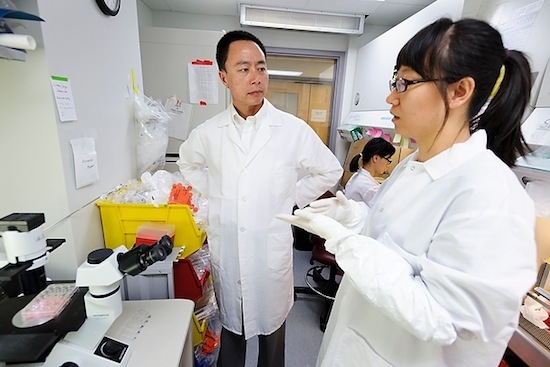
Su-Chun Zhang (left) talks with postdoctoral student Lin Yao as she prepares stem-cell cultures in the Zhang’s research lab at the Waismam Center.
Photo: Jeff Miller
Many scientists use animals to model human diseases. Mice can be obese or display symptoms of Parkinson’s disease. Rats get Alzheimer’s and diabetes.
But animal models are seldom perfect, and so scientists are looking at a relatively new type of stem cell, called the induced pluripotent stem cell (iPS cell), that can be grown into specialized cells that become useful models for human disease.
IPS cells are usually produced by reprogramming a skin sample into a primitive form that is able to develop into all of the specialized cells in the body. In the laboratories at the Waisman Center at UW–Madison, scientists are growing iPS cells into models of disorders caused by defective nerve cells. The technology depends on work pioneered over the past decade or so by Su-Chun Zhang, a neuroscientist who leads the iPS Core at Waisman, which also produces cells for other investigators on campus.
The multidisciplinary Waisman Center, now in its 40th year, combines treatment with clinical and basic research to address many of the most complex and disabling disorders of development.
“Animals are small and incredibly helpful,” says Zhang, a professor of neuroscience and neurology, “but if we take the neurological disorders that the Waisman Center focuses on, including Parkinson’s, Huntington’s, retinal degeneration, ALS, spinal muscular dystrophy, Down syndrome and autism, animal models often do not precisely mimic what we see in patients.”
The Waisman Center combines treatment with clinical and basic research to address many of the most complex and disabling disorders of development.
Zhang was the first in the world to overcome the primary challenge for using embryonic stem cells, and now iPS cells, to model neurological disease: mastering the subtle chemical cues that force a stem cell to develop into neurons, which carry nerve signals. “Now, we can not only direct iPS cells to become neurons, but also into very defined types of neurons that are involved in the diseases that most interest us,” he says.
In his own research, Zhang focuses on ALS (Lou Gehrig’s disease) and other fatal diseases that destroy the neurons that control movement. “IPS cells can create motor neurons that grow in a Petri dish and tell you, ‘I am sick.’ We see the same characteristic blobs and tangles in the long fiber of the nerve cells. Something is blocking traffic so the sub-units inside the cell cannot pass through these long fibers. This is exactly what we see in patients.”
Using iPS-derived cells, Zhang is attempting to find drugs that ease the traffic. “We can take the traffic jam and use it as a readout — a signal — in a dish, and screen as many as 1,000 compounds and approved drugs at a time, to see if we can find something that can open this traffic jam.”
Drug screening, in fact, is only one goal of the focus on iPS cells as neurological disease models at Waisman:
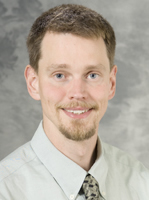
Matthew Jensen
Matthew Jensen, an assistant professor of neurology at the School of Medicine and Public Health, is generating several types of iPS-derived neural cells for testing in animals, with the aim of exploring brain regeneration after the most common type of stroke. The iPS cells are developed into neurons and support cells called glia, and grafted into a rat that models a stroke that follows the interruption of blood flow. “Currently, we think it’s most promising to transplant cells that have not quite fully matured,” Jensen says. “We want to see if the cells can integrate into the rat’s brain, contribute to repairing damage caused by the blood stoppage, and restore some of the function lost due to the stroke.”
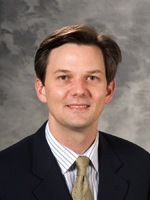
Samuel Gubbels
Samuel Gubbels, another physician-scientist at Waisman, is using iPS-derived cells to explore mysterious conditions in the inner ear, where specialized “hair cells” convert sound waves into nerve signals. The hair cells are housed in a delicate, fluid-filled organ inside the body’s densest bone, Gubbels notes. “Too often, we have no way to determine the cause of hearing decline in a patient; the tests and labs are mostly normal, so we have to do some guesswork. That’s very frustrating for both sides.” By developing a system to generate hair cells and supporting cells from a skin biopsy, “we’re aiming to determine the cause of hearing loss that has a genetic basis,” Gubbels says. “Then we would be in a better position to decide what is not functioning correctly in our patients, and that could become the basis for prevention or treatment.”

David Gamm
Ophthalmologist David Gamm, director of the McPherson Eye Institute on campus, is using iPS models to explore diseases of the retina. “Hundreds of mutations are associated with degenerative disease of the retina, but often we don’t understand why the cells become dysfunctional,” he says. “IPS-derived cells are an economical, straightforward way to bridge the gap between genetics and biology.” Gamm is also making iPS cells from tissue donated by patients with inherited blindness due to Best disease. “This effort may not lead directly to improvement in the research participant’s vision, but it empowers them to help future generations. These people have lived their whole life with this degenerative disease that robs them of their sight, and now with iPS cell technology they are able to donate cells and be part of research that helps them understand what they are dealing with and where to go from here,” Gamm says. “They know this will help others, including members of their own families.”
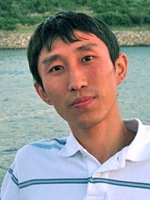
Qiang Chang
Qiang Chang, an assistant professor of medical genetics and neurology, works on Rett syndrome, a developmental disorder caused by mutations that deform an essential protein called MECP2. Rett syndrome shares many characteristics with autism. “Because MECP2 is such an important protein, its level needs to be tightly controlled,” says Chang. Because the gene is on the X chromosome, women can have one good gene and one defective one. By growing iPS cells from Rett patients, Chang can develop batches of neurons that differ only in the presence or absence of the MECP2 mutation, which gives him the ideal system for modeling Rett syndrome. The iPS-derived neurons, he says, “have the hallmark disease pathology of Rett: defects in nerve fibers called dendrites. In patients and animal models, the Rett mutation causes shrinkage of these fibers. In these cells, we have found something very similar.”
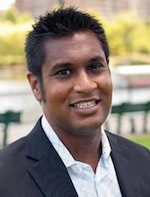
Krishanu Saha
Krishanu Saha, an assistant professor of biomedical engineering at Wisconsin Institute for Discovery, collaborates closely with Waisman investigators in the use of biomaterials to manipulate stem-cell development, especially in relation to Rett and Fragile X syndromes, both common causes of neurodevelopmental difficulties. “The question we are interested in is how to engineer biomaterials in Petri dishes to see these diseases better, and to guide the reprogrammed cells to become neurons or other parts of body that are diseased,” says Saha.Another area of interest is altering the human genome to study mutations. “We want to put in markers to see better when and where a critical gene may be turned on and off. Eventually, we would like to mix-and-match cell types with different variants of important genes, to gain a better understanding of how specific mutations affect disease.”
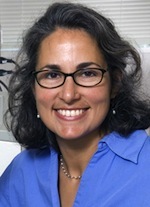
Anita Bhattacharyya
Anita Bhattacharyya, a senior scientist at Waisman, focuses on Down syndrome, which is the most common genetic cause of developmental disorders, and Fragile X syndrome, a single-gene mutation that can cause autism. Using iPS cells from people with these conditions, she has embarked on in-the-lab studies “to answer some very basic questions, try to define these conditions further, and then maybe move toward drug discovery.” In Down syndrome, she reports, the main difficulty is that “neurons talk less to each other due to a 50 percent reduction in the number of synapses (connections) in long projection neurons in the brain. The iPS model mirrors in a dish what we see in post-mortem brain samples.” To further explore the impact of this one mutation, Bhattacharyya may provide human cells with Fragile X to Waisman neuroscientist Xinyu Zhao, for transplantation into mice.
That example is one of many that show the value of collaboration at the Waisman Center, says Bhattacharyya. “Our studies go from genetics and cell culture to treatment and the family history of disease, and we actually know what is going on with disparate researchers working on different aspects of these difficult problems. That’s the quickest, surest route to progress that will benefit the people we serve.”
